Shed antler hunting is a pastime enjoyed every year by a countless number of outdoors men and women.
Some people experience great success while shed hunting; others however find difficulty in becoming proficient in this game.
In this guide, you will know how to go shed hunting from basics to advanced tips. So let's dive into it....
Chapter 1: What is Shed Antler Hunting?
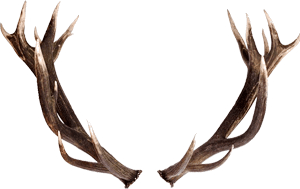
Shed antler hunting is the activity of searching for antlers that are cast off by bucks on a yearly basis.
Each year as the spring season comes around, bucks shed their antlers from the year before in preparation for regrowth.
These antlers are left laying in woodlots, agricultural fields, or various areas of deer habitat at the point where they were shed.
This presents a fantastic opportunity for outdoorsmen and women.
Countless numbers of die-hard deer hunting enthusiasts take to the woods every year to conduct an intensive search for shed antlers.
Even though difficult at times, shed antler hunting can be extremely rewarding and drive hunters to return time and time again.
Chapter 2: Why Go Shed Hunting?
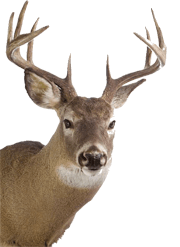
The list of benefits to shed antler hunting is so numerous and it has become a yearly tradition for a multitude of hunters across the nation and beyond.
The following are some of the top benefits associated with shed antler hunting:
Chapter 3: When Is Shed Hunting Season?

Shed antler hunting is generally conducted from late winter through early spring.
States generally do not have set season dates as they do for deer hunting season itself. Instead, the time period during which shed antler hunting is conducted, is dictated by the deer themselves.
The increase in daylight hours, or photoperiod, during the spring of the year trigger chemical changes in wild deer. These changes cause a substantial decrease in a buck’s testosterone levels. This drop ultimately leads to the loosening and shedding of a buck’s antlers.
Bucks in the majority of areas will typically shed their antlers between late December through early March. Some deer do occasionally shed earlier or later than this, however, most shedding will occur within this general time window.
Although shed antlers can be found anytime during the year, the late winter and early spring months are preferred by the majority.
Why is that?
It is important to understand and identify the laws that apply to shed antler hunting in your area. What might be completely legal on private land, could potentially land you in hot water on government-owned property.
Chapter 4: Where to Go Shed Hunting?

Shed hunting usually requires a substantial amount of ground to be covered in order to experience regular success.
So the question is: “where to look when shed hunting?”
In this section, you’ll know where are high impact areas to maximize your efficiency.
But first...
Is Shed Hunting Legal?

Before planning your shed antler hunting outing, you must first check the legalities of shed hunting in any areas that you are considering.
Currently, West Virginia is the only state that prohibits shed antler hunting in any form. Although this is the current case, rules are subject to change at any time.
State laws:
Although individual states do not generally have set dates for shed hunting, some do have date-specific regulations regarding shed hunting on public land.
These policies are put into place in an attempt to cut down on disturbances to other wildlife species that could be vulnerable to human intrusion.
Why is this important?
A quick check of the laws regarding shed hunting can easily save you from making an unintentional mistake.
The violation of any game laws can quickly lead to costly fines and even imprisonment.
Where to Look When Shed Hunting?
These are several places where you can be more likely to find shed antlers. I’ll tell you more details on the advanced tips below. So keep reading:
High Deer Density
The first item of business when choosing where to shed hunt is determining areas of high deer density.
It is easy to reason that an area that supports 15 deer per square mile is likely to yield a higher success rate than one with 6 deer per square mile.
By sheer odds, the heavier that a deer population is in a specific area, the better your odds of success become.
Agricultural Areas

A great way to estimate deer densities within an area is by considering the habitat in that given area.
Areas that are dedicated primarily to agricultural use will generally support higher deer densities than an area of old-growth woods.
This stems from the fact that every piece of habitat has a carrying capacity that is associated with it.
Once all natural resources are exhausted, the land can no longer support higher deer numbers.
Because of this, food-rich areas such as extensive agriculture fields typically have quite high carrying capacities.
High Traffic Trails

Via nyantler-outdoors.com
Once a high deer density area is chosen, you must consider how deer move in that area. Deer, like people, generally prefer to take the path of least resistance in their daily travels.
Habitat features that facilitate easy travel from place to place commonly exhibit well-worn deer trails.
Shed hunters should scout in order to find these paths of least resistance and highly traveled trails, earmarking them as potential hotspots.
By gaining an understanding of how deer move about certain properties, you gain a sense of where these deer spend the bulk of their time.
By focusing your efforts toward heavily used travel corridors, you eliminate the bulk of non-productive ground that remains.
Food sources
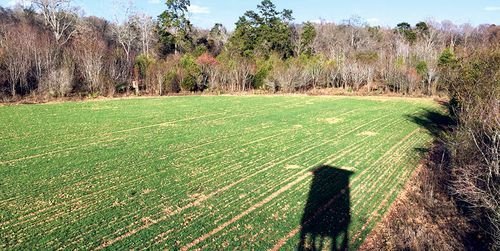
Via qdma.com
Another location of interest for avid shed hunters are areas containing favored food sources.
Areas such as cattle pasture and large harvested grain fields can be favorites of deer nearing the point of shedding.
These fields serve as a hub for late winter and early spring deer to pick and consume any remaining vegetation.
Since deer commonly yard up in large numbers in these fields, a shed hunter can scout these areas once noticing bucks in absence of their antlers.
Bedding Areas

Via realtree.com
Bucks spend a substantial amount of their time in bedding areas. For this reason, they are naturally wonderful places to look for.
These beds are also occasionally located within heavy cover which can potentially aid in antler loss.
Buck beds are often easily recognizable due to the presence of matted vegetation.
Southern facing slopes are often an excellent place to begin searching for buck beds during the winter months.
This is due to the fact that these areas receive a maximum amount of sunlight exposure during this time of year and allow bedding bucks to conserve body heat.
Thickets and Brush

Areas of thick covers, such as thickets, can be excellent points to examine while in search of shed antlers.
These ones are often hotspots for buck used.
Brush also has the tendency to speed up antler loss. This is due to the fact that antlers can easily become ensnared in the brush.
When this occurs, any antlers that were already loose will more than likely be lost at this time.
Chapter 5: Shed Hunting With Dogs

If you go shed hunting alone, you can miss a lot of antlers. Luckily, a specially trained shed hunting dog can sniff them out and archive more antlers for you.
But you might think to yourself: “what is the best shed hunting dog and how to train it?”. I’ll tell you below:
What are the Best Shed Hunting Dog Breeds?
1) Pudelpointer:

Pudlepointers is a wonderful choice as a shed dog due to their go-anywhere type mentality. This breed is agile and rugged, going virtually anywhere their owner can go, and in many cases more.
Pudlepointers are also renowned for their loyalty and desire to excel at anything that is asked of them, no matter the circumstances.
2) Labrador Retriever:
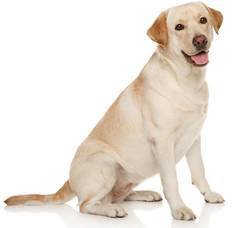
Labs are known for being an excellent, well rounded, and versatile breed of dog. Labs tend to be highly intelligent and easily trained, which is an absolute must with any shed dog.
This breed of dog is also known for an excellent sense of smell, as well as a natural disposition that makes it well suited for handling the game and retrieving on command.
3) Beagle:

Beagles are well-known all over the world for their hunting savvy. A keen nose makes a beagle a natural selection for those looking to add a shed dog to their adventures.
Beagles are also known for persistence that is seldom rivaled. When a beagle is locked on to a scent, they will continue in their efforts until successful.
4) Golden Retriever:

Golden Retrievers are an excellent all-around dog and stand-out shed hunting companion. Golden Retrievers are well known for their easy-going temperament and insatiable desire to please their owner.
This breed is also easily trainable and was initially bred for use in upland game hunting. This makes a Golden Retriever a wise choice for long days out pursuing shed antlers.
5) American Foxhound:

An American Foxhound is a breed specifically geared toward seeking out their prey. Because of this, an American Foxhound is a great choice for those who intend to cover great distances in a single outing while shed hunting.
When this breed locks in of a task, no distraction can take their mind away from their mission. Once trained to hunt shed antlers, an American Foxhound will be a shed hunting machine from that point forward.
6) Bloodhound:
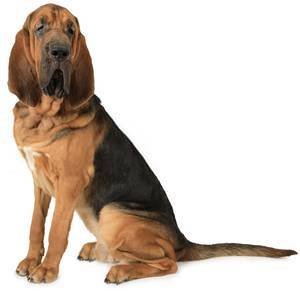
Bloodhounds are renowned for their sense of smell that far exceeds that of almost any other breed.
Bloodhounds have been used for virtually any type of tracking that one could think of and excelled in the majority of cases. Once a bloodhound is on the scent of a shed antler, he will search relentlessly until his prize is found.
7) German Wirehaired Pointer:

German Wirehaired Pointers are a breed that is heavily used in bird hunting and are well known for their ability to sniff out the game.
Perhaps one of the greatest attributes of a German Wirehaired Pointer is their near-endless supply of energy.
This can be a wonderful quality in a shed dog if you intend to search far and wide on any given outing. It is safe to say that you will be worn out before your German Wirehaired Pointer is.
8) Pointer:

Pointers are an old upland hunting breed that dates back more than 400 years. There is good reason for Pointer’s long-lived and much-appreciated success as a hunting breed.
They are loyal to a fault and will work as hard for their owner as to any other breed in existence. With a mind geared specifically toward hunting and retrieving, training a pointer is usually not a difficult or lengthy process.
9) Weimaraner:

Weimaraners is a breed of exceptional hunting prowess. It is heavily prey minded and can remain focused on even the longest shed hunting outings.
Even though somewhat difficult to train, Weimaraners are relentless when seeking out sheds once becoming accustomed to the activity.
How To Train Shed Hunting Dogs and Save Your Energy (Step-by-Step)
Stage 1: Choose a Dog
Every training journey begins with the selection of a proper shed dog.
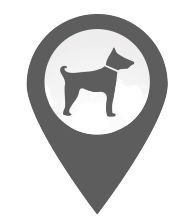
1) Choose a Breed:
You will need to consider which breed of shed dog will best fulfill your needs.
2) Consider Age Ranges:
You must weigh out the pros and cons of different age groups. Dogs learn rapidly at a young age and this also allows you to expose your dog to the task at hand as they grow.
However, young dogs tend to require more attention and effort initially.
3) Make Age Decision:
After all considerations are made, you will need to make a final decision regarding if a pup is right for you. It is best to acquire your shed dog as a freshly weaned pup if possible.
Acquiring your shed dog as a pup also allows you to develop a bond with them as their owner and master from a very early age.
4) Make Your Purchase:
Once a decision is made, you will now purchase your desired choice of shed dog.
Stage 2: Teach to Fetch
At a few months of age, you can begin teaching your dog the basics of fetching an object. This is an important step to the entire process, as the retrieval of antlers is your ultimate goal.

1) Get an appropriate size toy to begin training sessions.
2) Avoid oversized toys:
As they can cause frustration due to their inability to grip the object properly.
3) Max 20 min/day training:
Limit training sessions to a maximum of 20 minutes a day, three days a week, as to avoid exceeding your pup’s attention span.
4) Keep positive results:
You want to fetch become, and remain, an activity that your dog enjoys and is always eager to take part in.
Giving treats to your dog to reinforce positive results is also an excellent way to sustain progress.
Stage 3: Introduce Antlers
You should now introduce an antler into the process after basic fetching has been mastered. Slowly start replacing the fetch toy with an actual shed deer antler.

1) Grind Off Sharp Ends:
It is advisable to grind sharp ends off of antler tips to prevent your dog from inadvertently getting poked during the introduction stage. This helps isolate against providing a negative experience that could hinder your efforts.
2) Ensure Full Retrieve:
It is also important to ensure that your dog is completing the retrieve with every attempt.
3) Avoid Chewing:
You never want to allow your dog to chew on or simply hold an antler for extended periods of time.
This leads to bad habits that are not easily broken as the dog ages.
4) Reinforce Timely Retrieval:
You must reinforce that an antler is to be brought back to you immediately upon its discovery.
Stage 4: Teach to Seek
Once your dog has become comfortable with the retrieval of antlers, it is time to teach the seeking portion of the process.
At this point, your dog has learned to retrieve using their sense of sight.
You must now teach him/her to use all of their senses to locate the antler that they seek. Your dog must be taught to locate what they cannot see.









1) Maintaining Controlled Environment:
During this portion of the training, you want to keep all activities to a controlled environment to take away any additional distractions that would be faced in the field.
2) Choose Training Location:
Back yards are excellent candidates for this type of training.
As dogs can hone their abilities in a familiar location that allows for enhanced and expedited learning.
3) Place Antler:
4) Allow To Fetch:
At this point, you can allow your dog to fetch.
The antler should be easily located, since your dog witnessed the general location in which you placed it.
This is a wonderful exercise for building your dog’s confidence, which is vital to their success.
Stage 5: Increase Difficulty

With every retrieval, your dog’s abilities increase and confidence grows. You must now take your training to the next level.
1) Hide Antlers Thoroughly:
You can begin hiding antlers in increasingly difficult to distinguish locations.
2) Increase Difficulty:
You will hide each antler in a more difficult to find location than before.
3) Study Your Dog:
You will need to observe your dog carefully to ensure that they are scenting out the antler.
Your dog is forced to rely heavily on its senses, especially that of smell, to be successful.
This is of great importance as he/she is moved into field trials.
Stage 6: Head to the Field









You will now begin transitioning to a location similar to that which will be experienced while shed hunting.
1) Find a Location:
First, you will need to find a location that is representative of the areas where hunts will be conducted.
2) Hide Antlers: You will now begin hiding antlers and then allowing your dog to seek them, much the same as previously done in a controlled environment.
Note: The key is to make these retrieves difficult, but not so difficult that a dog will become discouraged and lose interest.
Stage 7: Increase Distances

Once your dog has become well accustomed to these style retrieves, you will need to properly test their abilities.
1) Choose Lengthy Distances: Begin locating antlers a substantial distance away.
2) Allow Retrieve: While giving guidance, allow your dog to work toward the sight of the hidden sheds.
3) Verify Approach: As you approach, watch carefully to ensure that your dog is picking up on the scent of the antlers as they close the distance.
4) Assess Completion: If a successful retrieve is made, this will signal that your dog’s training should be nearing completion.
Stage 8: Enjoy First Hunt
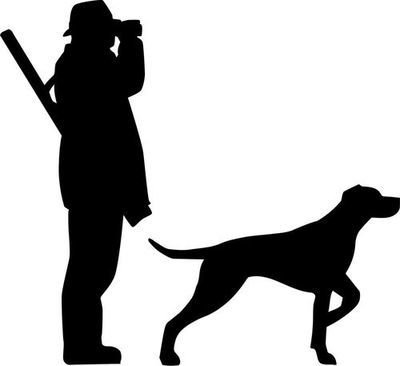
When the decision is made to take your dog out for their maiden shed hunting trip, it is a proud occasion.
1) Choose your destination wisely:
You will need to choose high impact areas that are likely to hold multiple sets of antlers.
This ensures that your dog’s experience is a positive one.
2) Avoid Discouragement:
You will need to avoid your dog becoming discouraged at all costs.
A puppy still has the potential to become disinterested when little in the way of antlers are found.
If possible provide your dog with assistance by pointing them in the right direction.
3) Monitor Your Dog’s Progression:
You will need to keep a watchful eye on how your dog’s skill level is progressing.
As your shed hunts together proceed, your dog will continue to grow and fine-tune skills and abilities that will prove useful.
4) Hunt Often:
You will want to hunt as frequently as time will allow.
The more your dog is afield, the more effective he will become.
Optional Choice:
If you lack the time to train your shed dog, you might consider hiring a shed dog trainer.
These services conduct regular training with your dog in order to foster their ability to seek out shed antlers.
The use of such a service can save you an immense amount of time.
Chapter 6: What to Pack for Shed Hunting?

Shed hunting can take you all day long. So what to bring shed hunting?
Here the list:
1) Durable Day Pack / Pack Frame:

Via hunttalk.com
A high quality, durable pack is the single item that can potentially make or break your shed hunting trip.
Well, is this true?
The majority of your other items such as antlers, gps, water, snacks, and additional layers of clothing will be carried in your pack.
If lacking in this department, you can’t be in for a long day.
You should find a pack that is of quality construction and durable enough to put up with harsh weather and rugged conditions.
A pack also needs to have adjustable straps and be comfortable while in use to prevent aggravation while hauling antlers.
2) Quality Boots:
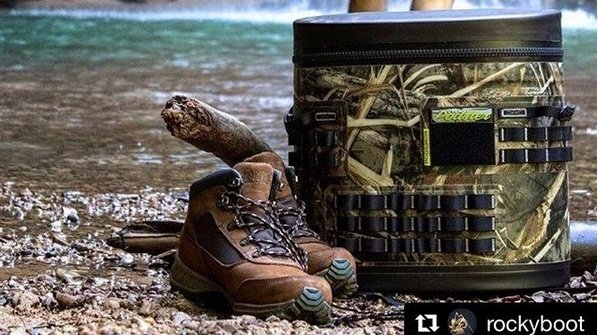
Many miles are generally covered by foot in a single day of shed hunting. A substantial amount of this distance is often in rocky, muddy, steep, or marshy terrain.
With less than ideal footwear, not only does this type of travel become tiring and painful, but dangerous as well.
A quality pair of boots might cost more than a cheaper one, but they will outlast and outperform their lesser counterparts on a day in and day out basis.
3) Drinking Water:

As miles are logged on your daily journey in search of shed antlers, maintaining hydration can become an issue.
If ill-prepared, what might seem like just a case of intense thirst can possibly turn into a medical emergency.
Although plastic water bottles can be carried along, they take up excessive space, can be tedious to carry, and generate excess waste.
Instead, you should use a high-quality, reusable water bottle. Bottles or thermoses come in varying sizes to fit your specific needs and generally keep water cool for an extended period of time.
4) GPS:

Shed hunting can often take you well off the beaten path.
Although generally not a problem, difficulties can arise if you become disoriented in regards to your location.
This situation can be further complicated by low light conditions such as those presented as the sun begins to dip below the horizon.
Anytime that you are shed hunting in a location that is somewhat unfamiliar to you, a GPS is a great tool to have at your disposal.
In a worst-case scenario, a GPS can quickly and efficiently guide a lost hunter back to their truck.
5) Snacks:

When planning an all day shed hunting outing, it is always advisable to have lightweight, high carbohydrate-based foods along in your pack.
As the wear and tear of the day fatigue your body, a quick snack can revitalize you and prolong your trip in a pinch.
Items such as granola bars are excellent options because of their minimum space requirements for carrying.
Read more: 20 Best Food To Take Hunting
6) Binoculars:

Always carry a good pair of binoculars. You can look over an entire hayfield by scanning it from a ridge, plus you can scan the woods to confirm or reject any strange looking white objects in the forest duff.
I use my Sig Sauer Zulu series binocular in the deep woods to examine shiny objects that could be an antler and in open country to scan for points protruding from grass.
(Many thanks Mark Kayser for this tip)
7) Binocular Harness:

When carrying binoculars, the use of a quality binocular harness is almost certainly a must.
They keep binoculars situated in front of your chest, while also being comfortable and lightweight.
8) Polarized Sunglasses:

Polarized sunglasses have the potential to substantially help when searching for hard to find antlers.
The polarization reduces glare while also protecting your eyes from the sun’s harmful rays.
This reduction gives you a fuller field of view while scanning your surroundings.
9) Additional Layers:
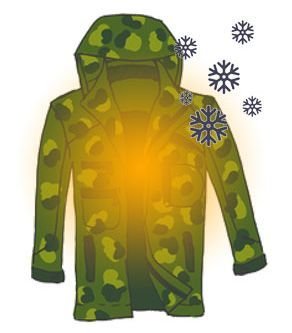
Because of the fact that shed hunting season often falls during some of the colder months of the year, adequate clothing is essential.
While actively hiking, you might not begin to feel a chill.
However, if a breeze sweeps the area or cloud cover moves in, temperatures can quickly become frigid.
Always pack a couple of extra layers, including a jacket, for times when additional warmth is needed.
Read more: Best Crossbow for the Money
Chapter 7: How to Increase Your Odds with Advanced Shed Hunting Tips

Often times, the difference between a successful and failed shed hunt comes down to your experiences and lessons learned while afield.
If you have been unhappy with your prior shed hunting success, or are new to shed hunting altogether, check out the following list of tactics to better your odds.
1) Locate Obstacles and Crossings:
Some of these tactics are based upon the knowledge of certain key features that yield higher rates of sheds within an area.
Many properties contain areas, that by nature, cause bucks to lose their antlers if they are nearing the point of shedding.
Generally, any obstacle that might cause sudden movement that would jostle already loosening antlers is an excellent place to pay a visit.
Fence Crossing:
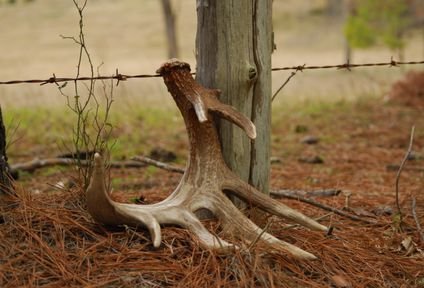
Via deeranddeerhunting.com
Fence crossings are one excellent example of such key features.
As a buck jumps a fence, the impending jolt that results upon landing has a tendency to cause the loss of already loosening antlers.
In knowing this, a shed hunter can trace deer trails back to locate frequented crossings.
Once these locations are found, the area nearby can be scoured for antlers.
Alternatively, a shed hunter can walk the perimeter fence of a property while searching for crossings and the resulting shed antlers.
Limbs And Other Debris:

Via tpwd.texas.gov
For this same reason, trails that intersect downed trees can be a hotspot for locating shed antlers.
Many times, a deer will not deviate from a trail to avoid a downed tree.
On the contrary, if crossable, a deer will often leap across obstacles of this nature.
That's why you should give special attention to sections of trail that are littered with limbs and other debris.
Creek Banks and Crossing:

Via northamericanwhitetail.com
Another similar location of note is at creek crossings.
Although many creeks are relatively shallow, their banks are often steep due to erosion from times of occasional high water.
Deer often cross these steep banks in order to reach what lies on the other side.
As they cross these steep banks, the jolt that follows commonly frees any loose antlers in the process.
For this reason, you should walk known creek banks and crossings, as they can be an excellent way to locate sheds.
2) Seek Out Bedding Areas:

Via realtree.com
Another high impact strategy for locating shed antlers in large quantities is by seeking out locations where deer spend large amounts of time.
Based on probability, a location that a buck spends the majority of his time is where his sheds are most likely to be found.
This is also a great school of thought for those who are seeking out the sheds of one particular buck.
Here's the deal:
Bedding areas are an area where bucks spend a substantial amount of time on a day-to-day basis.
In fact, as bucks age, they tend to stay closer to their beds because of the security that it affords them.
Bucks will generally stay bedded for the majority of daytime hours, only traveling short distances to water and browse briefly.
They also tend to use the same beds in a repeated manner unless they are pressured out of an area due to intrusion.
Thickets of Trees:
One likely location to find buck bedding area is in thickets of evergreen trees.
Through the late winter and early spring months, many trees are absent of any foliage.
Because of this, deer will seek out groves of evergreen trees for protection from the elements.
The added benefit of these locations is that many young evergreen trees have low-lying limbs.
They are perfectly positioned to make contact with a buck rack, in turn knocking free loose antlers.
Southern Facing Slopes:

Via thehuntingbeast.com
Another preferred bedding source for bucks during the deep winter months are southern facing slopes.
During the winter months, southern facing slopes receive the most direct sunlight on a daily basis.
For this reason, many bucks choose to bed on these slopes to warm themselves as a reprieve from winter’s chill.
They often bed along these slopes for as many as 20 hours a day while conserving their remaining energy due to limited food supplies.
The best part?
If a southern facing slope that runs for an extended distance is discovered, this can potentially be a gold mine of sorts.
You can discover multiple buck bedding areas by starting at one end of the slope and slowly walking the length of the southern facing edge.
The chances are good that you will find one or more sheds by walking the slope face in its entirety.
When searching for the presence of buck beds, there are particular attributes that can be noted that will point out their location:
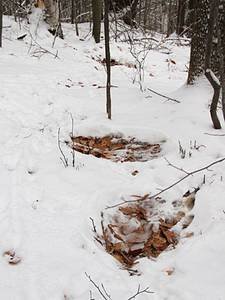
Large oval-shaped bare areas on snow - Via Naturallycuriouswithmaryholland
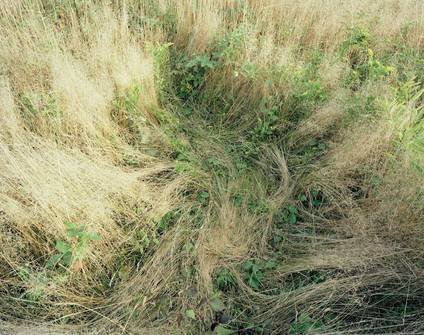
Deer bed area on grasses - Via cupofjo.com
3) Follow The Food:
Also of equal importance to a shed hunter is finding and searching key food sources.
Heavily trafficked food sources are second only to bedding cover in importance to deer during the late winter and early spring.

Via realtree.com
Here's why:
After surviving through a harsh winter, deer usually flock to any available food sources in great numbers. During this time of the year, finding a quality food source means finding an abundance of sheds.
By driving rural roads, especially in agricultural areas, deer can be visually located feeding heavily during the early morning and late evening hours.
Many farmers will willingly allow you to walk their fields in search of sheds.
4) Team Up for Success:
Another excellent way to maximize shed antler hunting is to hunt in groups.
Shed hunting success often comes down to how much ground a hunter can thoroughly cover.
It is reasonable to conclude that on any given day, a single hunter can only cover a certain amount of ground.
However, by working in a team of 3-4 hunters, you can search vast amounts of property in a relatively short time.
I'll tell you how below. Keep reading...
Grid Search Strategy:

When working as a team, a grid search method can be used to thoroughly comb an area in short order.
Divide and Conquer Strategy:
Alternatively, when shed hunting as a group, a divide and conquer strategy can be used to cover large tracts of land.
5) Time Hunts Wisely:
If a shed hunter ventures into an area before the majority of bucks have shed their antlers, opportunity can be lost.
Here's the reason:
Anytime that humans intrude into an area, deer are pressured and seek to avoid this human interaction.
This commonly results in deer changing their patterns to avoid these places.
It minimizes the chance of finding the antlers of these bucks when the time does come for them to shed.
This is why properly timing your intrusions into an area is crucial.
Solution:
For best results, you should strive to time their outings based upon knowledge of when the majority of bucks have shed their antlers.
If the proper time is chosen, your human intrusion will have little effect on the number of antlers you find.
At this point, most antlers will have already been dropped and it will not matter if deer are temporarily pushed from the area.
A couple of options exist to assist in determining when the best time for a shed hunting is on the horizon.
Option #1: Physical Observation

If you have begun to notice, while scouting fields, that very few bucks are retaining their antlers, this can indicate that prime time for shed hunting is near.
You can also compare your observations to those of other hunters in the area to get a better idea for the timeline of shedding activity.
Option #2: Use Trail Camera

Another way to effectively time shed hunts is by monitoring local deer through the use of trail cameras.
The same cameras that you used to spot bucks during deer season can now be used to record shedding of antlers.
6) Slow It Down:
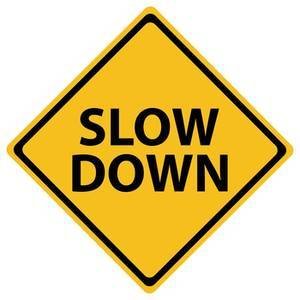
Although large swaths of ground typically need to be covered to produce large quantities of antlers, a hurried approach benefits no one.
When a shed hunter rushes through their search, the thoroughness of their efforts suffer. If you attempt to cover ground too quickly, you can easily overlook an antler at your feet.
So you should plan shed hunting outings when the greatest portion of the day dedicated to your efforts.
It get worse:
When shed hunting while frustrated at the lack of results, errors in your approach can result.
If you have searched extensively to no avail and have become exhausted, it is sometimes better to call it a day than proceed in a state of aggravation.
Aggravation clouds judgment and can significantly reduce the patience that is required to search thoroughly.
7) Find a Mentor:
If you are new to shed hunting, it may also be of benefit to tag along with a more experienced shed hunter. There is no substitution for experience when it comes to shed hunting.
With every passing season, you will become more efficient and learn which tactics work best for you. Just like any new activity, there is a definite learning curve to shed hunting.
Many people are more than happy to show the ropes to newcomers who display a genuine passion for the outdoors.
Many times, they will take you under their wing and continue to impart wisdom to you for years to come.
Invite a more experienced shed hunter to come out to a property where you have permission to hunt.
Optional Choice:
In this case, the option also exists for you to hire a shed hunting service. Employees from a shed hunting outfitter will come to your location and assist you in your efforts.
Not only will your odds of locating shed antlers significantly increase, but you will gain the opportunity to learn the tricks of the trade as well.
8. Build a “Shed Trap”:
(Thanks Mike from mikeroux.com for this great tip)

My very best shed hunting advice is to build a “shed trap” right after hunting season ends.
This is done with 3 or 4 short pieces of pipe or rebar:
I use Dixie Mule Feed. All deer will eat it but the bucks will constantly be bumping their antlers on it. I have found as many as a half dozen sheds in a single trap at one time.
I also recommend that folks check their State laws on baiting before building this trap.
9. Additional Tips from Steve Sorensen (everydayhunter.com)

Here are two other tips I have:
1. A lot depends on light. Bright sunlight is not good for hunting antlers. When the ground is wet and the sky is overcast, they show up better than any other lighting conditions.
2. Find an area where deer consistently bed in late winter and you'll find antlers.
10. Focus on a Good Plan:
(Thanks Steve from llinois Trophy Bow Hunters Inc. for this cool tip)

When you focus on strategy for taking the best buck on a farm, a good plan connects the dots on the map with the biggest rubs, scrapes, tracks, and trail camera photos.
You can think about that Bucks travel pattern, especially direction, and decide which winds are best for each treestand.
When I find that buck’s sheds, my confidence goes way up. I associate that location as within home base for that buck. He’s in trouble!
The Bottom Line
By following the information provided in this shed hunting (ultimate guide), your shed hunting outings can be highly productive and thoroughly enjoyable.
Every antler found tells a unique story of the buck that carried it through the previous year.
As always, feel free to comment or ask any questions that you have.
